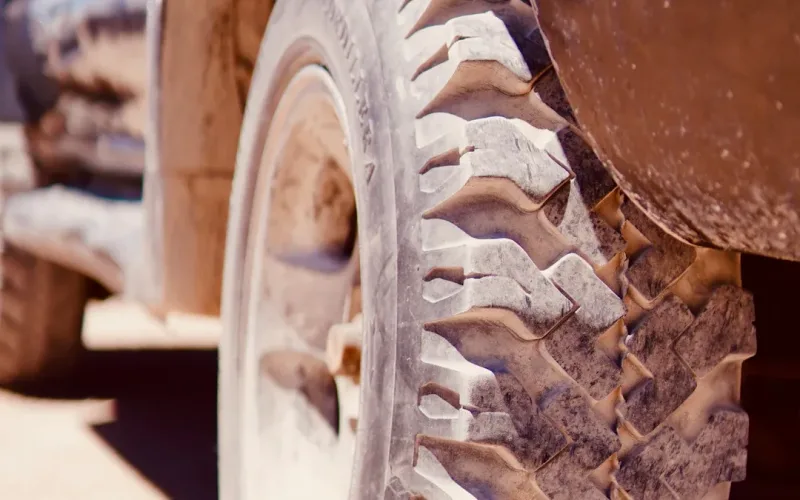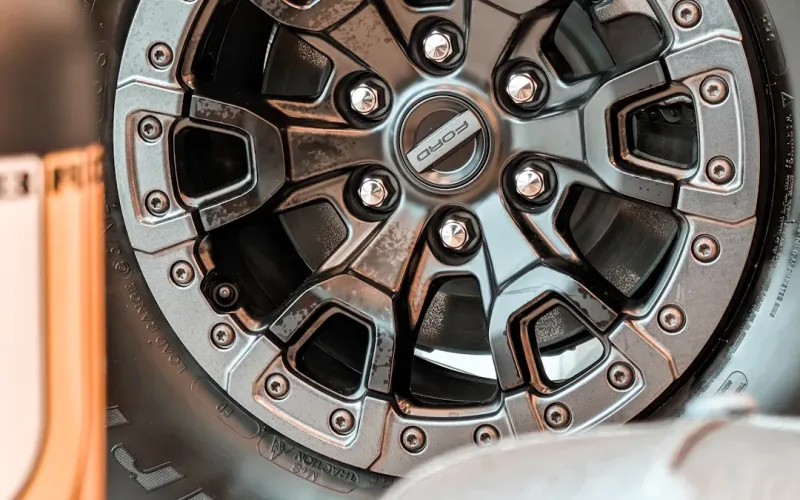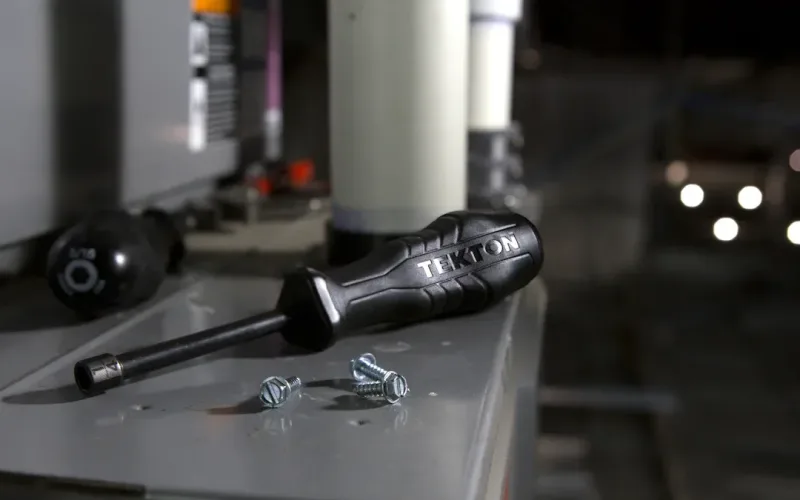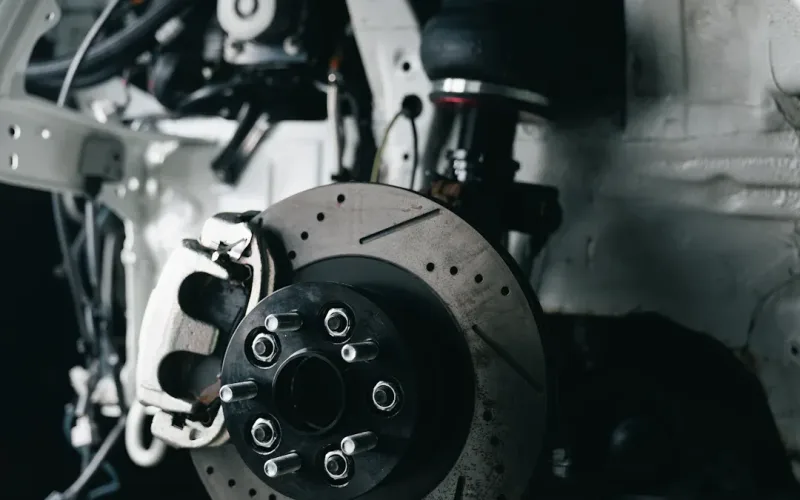

admin1
June 7, 2025
Why Lead Tire Weights Are an Environmental Threat
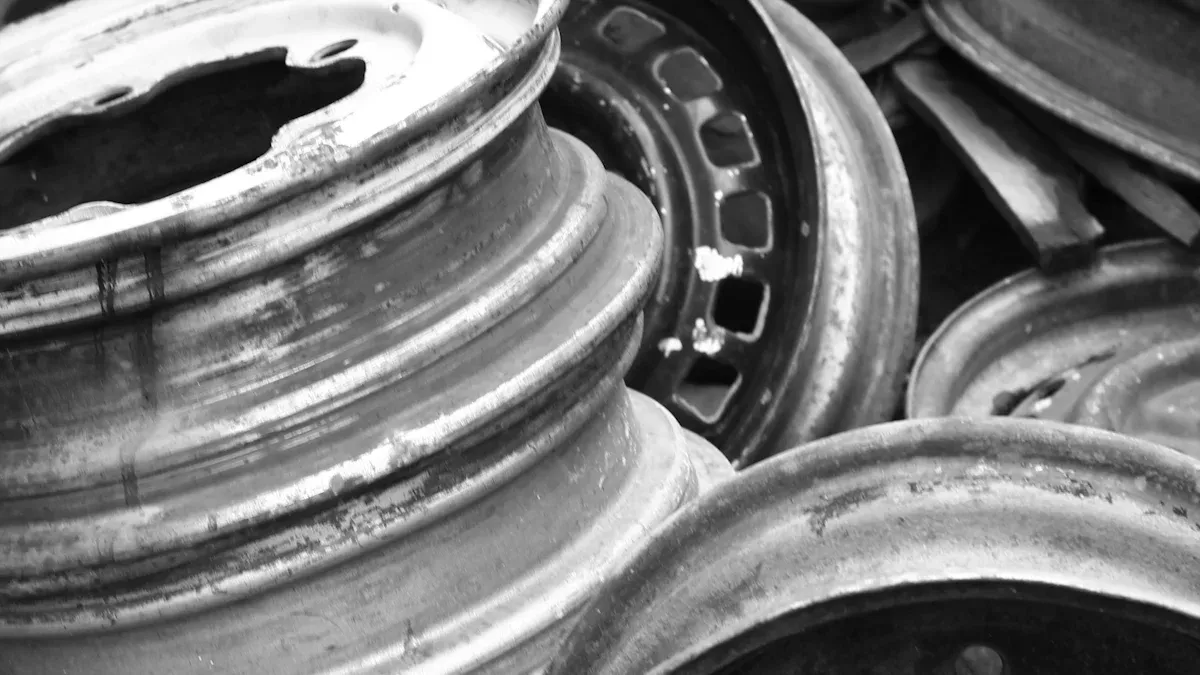
Lead tire weights pose serious risks to both the environment and human health. When these weights fall off vehicles, they release toxic lead particles into the soil and water. This contamination harms ecosystems and wildlife, often disrupting their natural balance. Lead exposure is especially dangerous for children. Even small amounts can damage their nervous system, affecting their ability to learn and grow. Studies show that lead exposure reduces IQ and increases impulsive behavior, creating lifelong challenges. By understanding the impact of lead tire weights, you can help protect vulnerable populations and the environment.
What Are Lead Tire Weights?
Purpose and Function of Lead Tire Weights
Lead wheel weights play a critical role in maintaining your vehicle’s performance and safety. These small, dense weights are attached to the rims of your car’s wheels to balance the tire-wheel assembly. Without proper balance, your vehicle may experience vibrations, uneven tire wear, and reduced handling. This can compromise your driving experience and even your safety on the road.
When a tire is mounted onto a wheel, slight imperfections in weight distribution can occur. Lead wheel weights counteract these imbalances, ensuring smoother rides and better traction, especially at higher speeds. By minimizing vibrations, they also help protect your vehicle’s suspension system from unnecessary strain. This makes them essential for maintaining stability and extending the lifespan of your tires.
Toxic Composition of Lead Wheel Weights
While lead wheel weights serve an important purpose, their composition poses significant environmental and health risks. Lead, a heavy metal, is highly toxic and does not break down in the environment. When these weights fall off vehicles, they often end up on roadsides, where they degrade into smaller particles. These particles can leach into the soil and water, contaminating ecosystems and entering the food chain.
Scientific studies reveal that lead particles from wheel weights often exhibit chemically corroded textures. This corrosion increases the likelihood of lead oxides forming, which are particularly harmful if inhaled or ingested. Even small amounts of lead exposure can cause severe health issues, including damage to the nervous system and cognitive impairments. The U.S. Environmental Protection Agency estimates that approximately 50 million pounds of lead are used annually for tire weights, highlighting the scale of this issue.
Efforts to phase out lead wheel weights have gained momentum due to these concerns. Many states have enacted bans, and major automakers like General Motors and Ford transitioned to safer alternatives as early as 2009. However, lead tire weights remain in use in many regions, continuing to pose a threat to both the environment and public health.
Environmental Impact of Lead Tire Weights
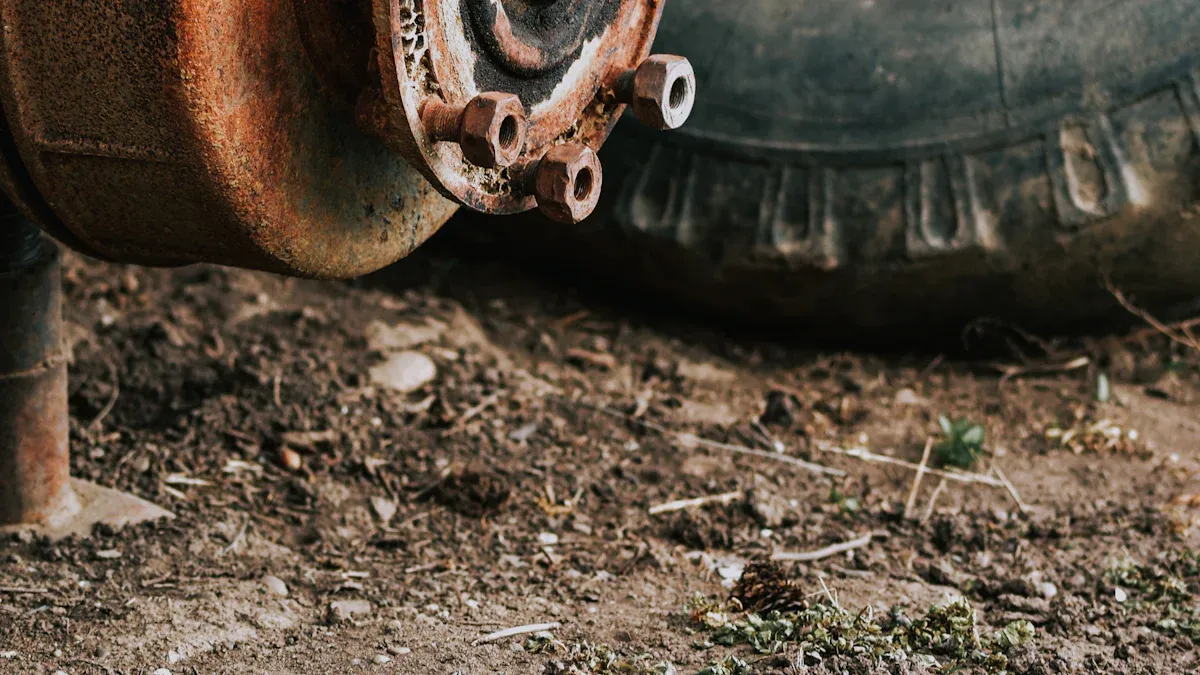
Soil and Water Contamination
Lead tire weights contribute significantly to the contamination of soil and water. When these weights fall off vehicles, they degrade into smaller particles that seep into the ground or are washed away by rainwater. This process introduces toxic lead into the environment, where it accumulates over time. Lead does not break down naturally, making its presence in soil and water a persistent problem.
A study conducted in Melbourne, Australia, quantified the extent of lead contamination caused by tire weights. Researchers observed an average deposition rate of 10 to 30 tonnes of lead per year along a 3–3.5 km road segment over five months.
| Metric | Value |
|---|---|
| Average Deposition Rate | 10 to 30 tonnes/year |
| Study Location | Melbourne, Australia |
| Survey Length | 3–3.5 km segment |
| Observation Period | Five months |
This data highlights the alarming rate at which lead enters the environment, contaminating soil and water sources. Contamination of soil and water disrupts ecosystems and poses risks to human health, especially in urban areas where lead concentrations are higher due to traffic density.
Harm to Wildlife and Ecosystems
Lead contamination spreads through ecosystems, harming wildlife and disrupting natural processes. Animals often ingest lead particles while foraging, mistaking them for food. This leads to poisoning, which can cause severe health issues, including organ failure and death. Aquatic life absorbs lead from contaminated water, which disrupts their nervous systems and growth. These effects ripple through the food chain, impacting predators and other species reliant on aquatic organisms.
- Lead contamination spreads through ecosystems, harming wildlife.
- Animals ingest lead particles while foraging, mistaking them for food, leading to poisoning and severe health issues.
- Aquatic life absorbs lead from contaminated water, disrupting their nervous systems and growth, which impacts the food chain.
Seasonal studies further illustrate the effects of lead contamination on ecosystems. In spring, lead concentrations reached 0.22 ± 0.01 mg/L at one site and 0.06 ± 0.03 mg/L at another. In summer, levels dropped to 0.09 ± 0.01 mg/L at the first site but rose to 0.24 ± 0.08 mg/L at a third location. These fluctuations demonstrate how lead pollution varies across ecosystems, affecting wildlife differently depending on environmental conditions.
Urban Pollution and Spread of Lead Particles
Urban areas face a unique challenge with lead pollution due to traffic patterns and vehicle density. Lead wheel weights often fall off vehicles during deceleration at intersections, accumulating in gutters and roadside areas. This abrasion process releases lead particles into the air and onto surfaces, where they are carried by wind and water, spreading contamination further.
In New Jersey, researchers estimated that 23–26 metric tons of lead enter the environment annually due to wheel weight abrasion. This figure is significantly higher than the New Jersey Department of Environmental Protection’s estimate of 40 kg. The abrasion rate ranges from 4% to 5% per day, contributing to the dispersion of lead particles across urban landscapes.
| Measurement | Description |
|---|---|
| 23-26 metric tons/year | Estimated lead entering the New Jersey environment from wheel weight abrasion, significantly higher than the NJDEP estimate of 40 kg. |
| 4% per day | Estimated abrasion rate leading to approximately 23 metric tons/year of lead particles. |
| 5% per day | Higher abrasion rate leading to an estimated 26 metric tons/year of lead particles. |
Lead pollution in urban areas poses risks to public health and ecosystems. It contaminates air, water, and soil, creating a cycle of exposure that affects both humans and wildlife. By understanding the sources and spread of lead particles, you can advocate for safer alternatives to lead wheel weights and support efforts to reduce urban pollution.
Health Risks of Lead Exposure
Vulnerable Populations Affected by Lead
Lead exposure poses significant risks to certain groups, especially children. Young children are particularly vulnerable because their developing bodies absorb lead more efficiently than adults. Even small amounts of toxic lead can cause severe health issues, including neurotoxic effects on children. These effects often manifest as learning difficulties, reduced IQ, and behavioral problems. Studies show that early childhood exposure to lead can negatively impact social outcomes, such as lifetime earning potential and increased aggression.
Some subpopulations face even greater risks due to environmental and socioeconomic factors. For example, children living near mining or smelting sites often experience elevated blood lead levels (EBLs). Those in urban areas, especially children aged 1–5, account for 46% of EBL cases due to higher exposure to lead particles from traffic and industrial activities. Housing conditions also play a role. Children in pre-1978 housing, where lead-based paint was commonly used, are more likely to have higher blood lead levels compared to those in newer homes. Additionally, children of lead-exposed workers face disproportionate risks, as lead particles can be brought home on clothing or equipment.
| Subpopulation Group | Risk Factors | Source |
|---|---|---|
| Children near mining and smelting sites | Elevated blood lead levels (EBLs) | Maisonet et al. 1997, Murgueytio et al. 1996, Swarup et al. 2005 |
| Children aged 1-5 in urban areas | High prevalence of EBLs, accounting for 46% of cases | CDC, 2003 |
| Children in pre-1978 housing | Higher BLLs compared to those in post-1978 housing | Bernard and McGeehin 2003 |
| Children of lead-exposed workers | Disproportionately higher BLLs | Chan et al. 2000, Whelan et al. 1997 |
Understanding these vulnerable groups highlights the urgent need to address lead tire weights as a public health concern. By reducing exposure sources, you can help protect these at-risk populations.
Occupational Hazards for Workers
Workers who handle lead wheel weights face significant health risks due to prolonged exposure. Manufacturing, processing, and disposing of lead tire weights can release toxic lead particles into the air. Inhaling or ingesting these particles can lead to elevated blood lead levels, which may cause severe health problems over time. The Environmental Protection Agency (EPA) has emphasized the dangers of occupational exposure, particularly for workers in industries that deal with lead products.
The Occupational Safety and Health Administration (OSHA) has set a permissible exposure limit (PEL) of 50 µg/m³ to prevent blood lead levels from exceeding 40 µg/dL. However, research shows that even lower blood lead levels can increase the risk of hypertension and other cardiovascular issues. Workers exposed to lead may also experience cognitive impairments, kidney damage, and reproductive health problems. These risks underscore the importance of implementing stricter safety measures and transitioning to safer alternatives.
If you work in industries involving lead tire weights, you should take precautions to minimize exposure. Wearing protective gear, following safety protocols, and advocating for non-toxic materials can help reduce the health risks associated with lead.
Long-Term Health Effects of Lead Poisoning
The long-term effects of lead poisoning can be devastating, particularly for children. Lead exposure during early childhood can cause irreversible damage to the nervous system. This often results in developmental delays, reduced academic performance, and behavioral issues. Even low levels of exposure can lead to significant neurological damage. The EPA’s blood lead module estimates that lead exposure from tire weights contributes to a minimal increase in blood lead levels, yet the cumulative impact of multiple sources remains a serious concern.
For adults, chronic exposure to lead can result in severe health problems. These include high blood pressure, kidney disease, and an increased risk of coronary heart disease. Lead exposure has also been linked to cognitive decline, affecting memory and decision-making abilities. The toxic effects of lead extend beyond physical health, impacting mental well-being and quality of life.
Epidemiological studies highlight the broader implications of lead exposure on public health. For example:
- Blood lead levels below 10 µg/dL are associated with increased risks of hypertension.
- Lead exposure has been causally linked to coronary heart disease and cognitive impairments.
- Even a small increase in blood lead levels can have measurable effects on IQ and social outcomes.
Addressing the health risks of lead exposure requires a proactive approach. By supporting policies to phase out lead tire weights and adopting safer alternatives, you can help reduce the toxic effects of lead on both individuals and communities.
Regulations and Industry Efforts
Laws Governing Lead Tire Weights
Efforts to regulate lead wheel weights have gained momentum in recent years. Many states in the U.S. have implemented current bans and restrictions on the use of lead tire weights. For example, California and Washington were among the first to prohibit the sale and installation of lead-based weights. These laws aim to reduce environmental contamination and protect public health by encouraging the use of safer alternatives.
However, the lack of federal regulation creates inconsistencies across the country. Some states enforce strict bans, while others have no restrictions at all. This patchwork of regulations complicates compliance for national tire retailers and manufacturers. Despite these challenges, many businesses have voluntarily transitioned to non-lead materials, showcasing their commitment to sustainability and consumer safety.
Global Initiatives to Phase Out Lead
Around the world, governments and industries are taking steps to eliminate lead wheel weights. Stricter environmental regulations have driven a shift toward sustainable alternatives. Manufacturers now use materials like zinc and steel to meet global standards and address consumer demand for eco-friendly products. This trend has spurred innovation in the market for wheel balancing solutions.
- Many countries in Europe have already banned lead tire weights, setting an example for others to follow.
- The automotive industry has embraced lead-free materials, with major automakers phasing out lead-based weights in their vehicles.
- International organizations continue to advocate for a complete transition to safer alternatives, emphasizing the long-term benefits for both the environment and public health.
These global efforts highlight the importance of collaboration between governments, industries, and consumers to address the environmental threat posed by lead.
Challenges in Regulation Enforcement
Despite progress, enforcing regulations on lead tire weights remains a significant challenge. The absence of unified federal legislation in the U.S. allows loopholes that hinder a complete phase-out. Manufacturers and distributors often face difficulties navigating varying state laws, which slows the transition to non-lead alternatives.
Economic factors also play a role. Non-lead weights, such as those made from zinc or steel, can be more expensive initially. This cost difference discourages some businesses from adopting safer materials, even though prices are becoming more competitive. Additionally, without strong regulatory support, manufacturers may hesitate to fully commit to producing lead-free products.
To overcome these challenges, policymakers must prioritize comprehensive legislation. A nationwide ban on lead wheel weights would streamline production and distribution, making it easier for businesses to comply. By addressing these enforcement issues, you can help ensure a safer and more sustainable future.
Safer Alternatives to Lead Tire Weights

Non-Toxic Materials for Tire Weights
Switching to non-toxic materials for tire weights is a practical solution to reduce environmental harm. Manufacturers now use safer alternatives like zinc, steel, and composite materials. These materials provide the same functionality as lead weights without the associated risks. Zinc, for example, is durable and resistant to corrosion. Steel offers high strength and is widely available. Composite materials, often made from polymers, are lightweight and eco-friendly.
The transition to these materials has already shown promising results. Many automakers and tire retailers have adopted non-lead weights to comply with environmental regulations. This shift demonstrates that safer alternatives can meet industry standards while protecting ecosystems and public health.
The transition from lead to alternatives like zinc or steel alloy wheel weights has significantly reduced lead content in wheel weights from over 90% to just 0.1%. This shift has been supported by multiple state and international standards, suggesting a strong regulatory push toward safer materials, which mitigates risks to human health and the environment.
Benefits of Switching to Safer Alternatives
The benefits of non-lead wheel weights extend beyond environmental protection. Safer alternatives reduce the risk of toxic contamination in soil and water. They also minimize harm to wildlife and ecosystems. By using non-toxic materials, you help create a cleaner and healthier environment for future generations.
From an economic perspective, safer alternatives can lower long-term costs. Lead contamination often requires expensive cleanup efforts. By preventing pollution at the source, industries and governments save money. Additionally, the growing demand for eco-friendly products drives innovation, creating new opportunities in the market for sustainable materials.
The industry shifts toward safer alternatives also improve public health. Reducing lead exposure decreases the risk of cognitive impairments, cardiovascular issues, and other health problems. This change benefits everyone, especially vulnerable populations like children and workers in the automotive sector.
How Consumers Can Support the Transition
As a consumer, you play a vital role in promoting safer alternatives. Start by asking your mechanic or tire retailer about the materials used in your wheel weights. Choose businesses that prioritize non-toxic options like zinc or steel. Your purchasing decisions send a clear message to manufacturers about the importance of sustainability.
Advocacy also makes a difference. Support organizations and policies that aim to phase out lead tire weights. Public health advocates, such as Earthjustice, have already taken legal action to push for stricter regulations. Their efforts highlight the importance of consumer voices in driving change.
Public health advocates represented by Earthjustice have taken legal action against the EPA for delaying regulations on lead wheel weights, which are known to contaminate the environment and pose serious health risks. The advocacy aims to eliminate lead exposure, which is linked to various health issues, and to promote safer alternatives, such as zinc or steel wheel weights, that can effectively balance tires without the associated risks of lead.
By making informed choices and supporting advocacy efforts, you contribute to a safer and more sustainable future.
Lead tire weights pose a serious threat to the environment and human health. Every year, over 17 million tons of tires are discarded globally, with 75% ending up in landfills. This creates significant environmental challenges, including soil and water contamination. Toxic chemicals from tire wear particles can degrade into even more harmful compounds, increasing risks to respiratory and cardiovascular health.
Switching to safer alternatives like zinc or steel can reduce these impacts. You can support this transition by choosing eco-friendly products and advocating for stricter regulations. Collaboration among consumers, industries, and policymakers is essential to create a cleaner and healthier future.
FAQ
What are lead tire weights made of?
Lead tire weights consist of lead, a dense and toxic heavy metal. Manufacturers use lead because it is inexpensive and effective for balancing tires. However, its toxicity makes it harmful to the environment and human health.
Why does the EPA regulate lead tire weights?
The EPA regulates lead tire weights to reduce environmental contamination and protect public health. Lead particles from these weights pollute soil and water, harming ecosystems and increasing health risks for vulnerable populations.
Are there safer alternatives to lead tire weights?
Yes, safer alternatives include zinc, steel, and composite materials. These options provide the same functionality without the environmental and health risks associated with lead. Many manufacturers now use these materials to comply with EPA guidelines.
How can you help reduce lead pollution from tire weights?
You can choose tire retailers that use non-lead weights. Supporting businesses that prioritize eco-friendly materials helps reduce lead pollution. Advocating for stricter EPA regulations also drives change.
What are the long-term effects of lead exposure?
Lead exposure causes cognitive impairments, cardiovascular issues, and developmental delays. The EPA emphasizes that even small amounts of lead can have lasting health impacts, especially for children and workers exposed to lead particles.
